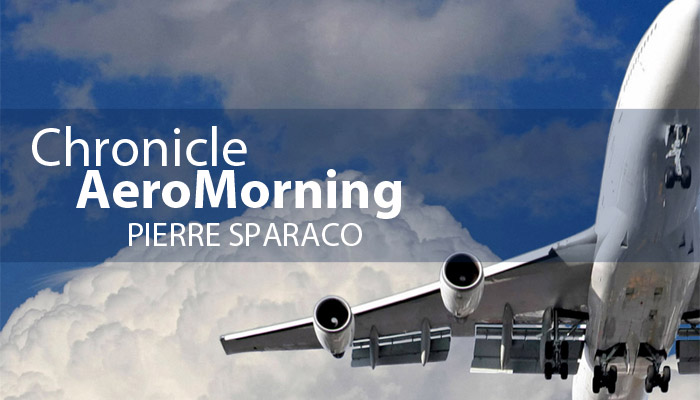How to predict the future of air transport by 2050? The ID Aéro consultancy are not the only ones to take up the challenge: last week, it’s was the turn of the Toulouse-based Air and Space Academy to take the plunge, with a great deal of courage. A two-day conference to throw up some interesting – although not always consistent – ideas and take a bold look at the future,
Pride of place went to Georges Ville, former Financial Director of Aerospatiale’s Airbus unit, a highly skilled, passionate air transport professional, who never leaves home without his crystal ball. He explained that the statistics are not going to reach the sky and that traffic forecasts from most major players are unduly optimistic. Consequently, with the backing of solid (albeit clearly unverifiable) arguments, he considered that world air traffic would not progress indefinitely by 5% per year. “It is not pertinent”, he affirmed.
Georges Ville is not preaching in the desert. One proof among many: Philippe Jarry, one of the main players behind the launch of the A380, implicitly agreed with this point of view. He noted that there were 2.7 billion air passengers in 2011 and put at 7.7 billion the number for 2050. In other words, traffic will no longer be doubling every 15 years.
Michel Wachenheim, France’s representative for the International Civil Aviation Organisation, was too prudent to take sides but said that the world would be radically transformed by 2050. He affirmed that a constantly evolving equilibrium would lead to Asian traffic multiplying tenfold in the next 40 years. Which amounts to saying that this region of the world is moving towards true world leadership.
Gilles Bordes-Pagès, Air France Director for Strategic Relations, adopted a different attitude: “How we will be flying in 2050 is, for airlines, almost a redundant question, since they are confronted with much more immediate problems… including their very survival”. This statement sends chills down the spine, due especially to the countless other questions it throws up. “Let’s rather ask the question of whether we’ll still exist in 2050, and in what form. Will we still be a French network airline?” Food for thought, especially since Air France is currently going through a patch of dangerous turbulence. Any doubts still? Here’s the final nail in the coffin: “The coming 40 years will be dramatic for our sector”.
After a return to some less disturbing questions, Gilles Bordes-Pagès went on to predict an oil price of 250 dollars a barrel, the limit beyond which substitute fuels are financially viable. And yet, a little earlier, Agnès Bénassy-Quéré, a lecturer at Paris 1 Panthéon-Sorbonne university, had announced to a somewhat mystified audience of aviation professionals that in 40 years, the barrel of crude should be priced at 152 dollars, at constant value. If it was not already the case, we would now seriously have lost our bearings!
The Air and Space Academy thus contributed to aggravating the insomnia of experts from all areas. In which case, is it really useful to talk of 400-seat Blended Wing Body aircraft? Or other more or less science fiction configurations? Opinion is divided on that one.
Pierre Sparaco – AeroMorning
(Translated by Lindsey Jones)
Flying in 2050 – Traffic statistics are not going to reach the sky.
 aerospace news
aerospace news












Be the first to comment on "Flying in 2050 – Traffic statistics are not going to reach the sky."